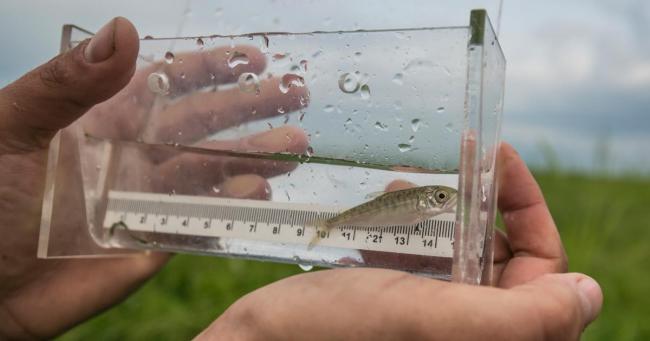Articles Menu

Published on
Last week, we released a report that highlights the risks posed to wild salmon in the Lower Fraser River from a Trans Mountain pipeline or tanker spill. The report details the year-round presence of different salmon species, the river’s unique features, the nature of diluted bitumen, and the failures of Trans Mountain’s environmental assessment, as well as the inadequacy of the National Energy Board review.
Raincoast submitted the essence of this report as evidence during the National Energy Board review of the Trans Mountain pipeline and still has a challenge before the courts on the approval of the project.
We were lucky to have toxicologist Kate Logan as the lead author, as her expertise has been critical in helping us understand and articulate the risk associated with exposure to the toxic components of diluted bitumen. Given the year-round presence of salmon in the Lower Fraser and the potential consequences of exposure to dilbit, there is no time when the risk to salmon from an oil spill is low or acceptable. Whether as embryos, juveniles or adults, salmon are present in the Lower Fraser River every month of the year, using the river and its estuary for migration, rearing, and spawning.
The report highlights how the Fraser River’s man-made features like log booms, kilometers of riprap, armoured shorelines, and developments provide many opportunities for spilled oil, especially diluted bitumen, to strand along shorelines. Once on these shores, it will be extremely challenging, if not impossible, to recover that oil.
These features, and the Lower Fraser River itself, are increasingly familiar to us as we finish a third year of research in the Lower Fraser and continue to examine the broader potential for habitat restoration. We know that the simple straight channel, assumed by Trans Mountain in their spill modelling, does not exist, and Trans Mountain did not address the possibility of submerged and/or sunken oil in their modelling or spill response plans, despite the river’s high sediment load.

Our Lower Fraser salmon conservation program, including our research into the distribution of juvenile salmon in the Fraser estuary, and our Fraser estuary connectivity project, were initiated precisely because of the estuaries’ ecological importance. Unfortunately, many juvenile salmon species are particularly vulnerable to oil spills in the Fraser estuary, and other estuaries in the Salish Sea, as they rely on its sheltered habitats for extended periods when young. It may be impossible for them to avoid spilled oil as they adapt to life in salt water.
This report comes at a time when one-third of the wild salmon populations in the Fraser River are already considered at risk of extinction. Given this reality, a precautionary approach indicates that there is no time when the risk to salmon from exposure to spilled oil is low.
As owners of the Trans Mountain Pipeline, do we want to increase the risk to our already threatened wild salmon populations?
The status of Fraser wild salmon is a clear indication that economic, social, and environmental considerations are not in balance. Please take a look at the report and share it with others, including your elected representatives and the media. If the federal government does build the Trans Mountain pipeline, it must do so knowing this decision clearly jeopardizes Canada’s greatest salmon river and a fish considered the lifeblood of British Columbia.
For the Lower Fraser River, its salmon, and all the species of this neglected ecosystem.
[Top photo: by Michael Snyder.]